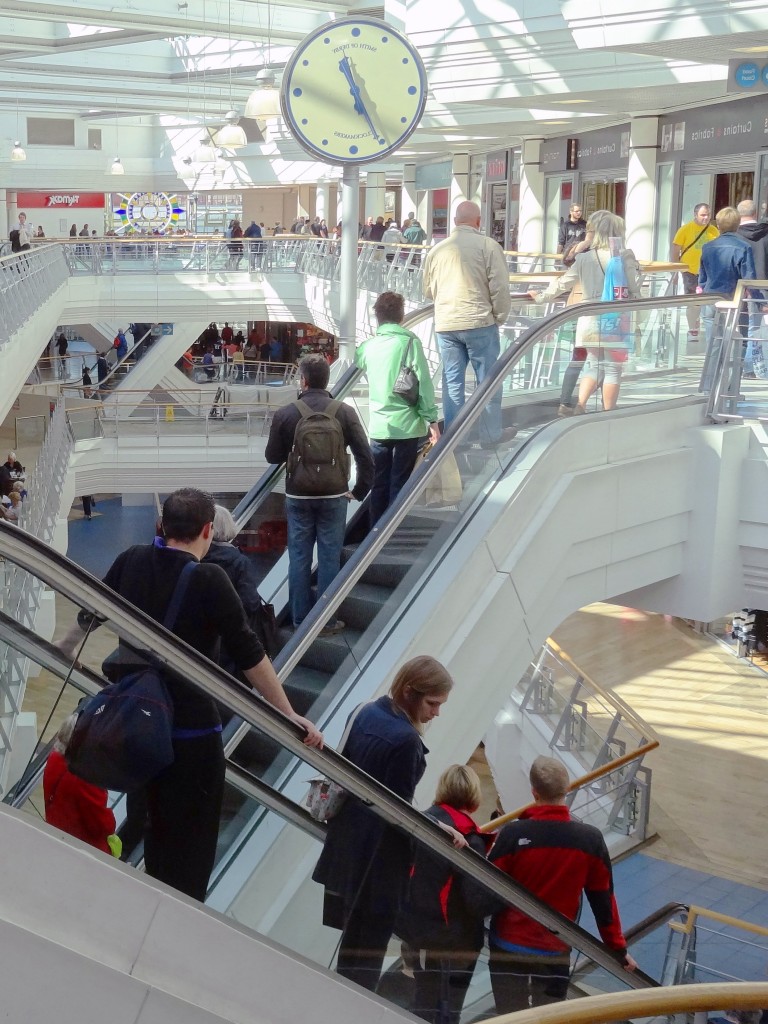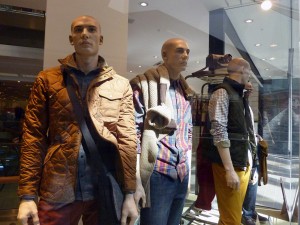 With the winter fast approaching, consumers have already begun to stock up on warmer clothes. This has contributed towards consumer spending increasing faster in September than it has in the past 3 years. According to Visa Europe’s UK expenditure index, sales in August increased by 1.2pc, but in September they rose month-on-month by 3pc.
With the winter fast approaching, consumers have already begun to stock up on warmer clothes. This has contributed towards consumer spending increasing faster in September than it has in the past 3 years. According to Visa Europe’s UK expenditure index, sales in August increased by 1.2pc, but in September they rose month-on-month by 3pc.
But whilst sales on the high-street increased, sales on-line and over the telephone declined. It seems that the recent decrease in temperature is just what the retail sector ordered, as people took to the high streets.
Furthermore, recent improvements in consumer income, together with lower inflation and rising employment have all contributed towards a growth in spending. However, as consumer confidence remains at a relatively low level, it is unlikely that the winter will bring much of a change to growth in the economy. The Chief Economist at Markit said:
However, consumer confidence remains historically low as uncertainty about the economy and job security persists, suggesting that the bounce in spending seen in the third quarter could be as good as it gets for the foreseeable future.
 Although the lower temperature has caused a boost in consumption, once people have made their ‘investment’ in warmer clothes, retail spending may once again decline. Hence the above comment by Markit, which suggests that further sustained increases in consumer spending may still be some way off.
Although the lower temperature has caused a boost in consumption, once people have made their ‘investment’ in warmer clothes, retail spending may once again decline. Hence the above comment by Markit, which suggests that further sustained increases in consumer spending may still be some way off.
The following few articles look at the latest data on retail spending.
UK consumer spending ‘rose in September’ BBC News (5/10/12)
Consumer spending increases by 3pc The Telegraph (5/10/12)
Consumer spending increases by 3% The Press Association (5/10/12)
UK retail sales: what the analysts say Guardian (20/9/12)
Online sales and wet weather boost John Lewis Scotsman, Peter Ranscombe (5/10/12)
Questions
- Which factors typically affect consumer spending?
- Using a diagram, illustrate the impact of this increase in consumption on national output and the price level.
- Is it possible that a multiplier effect may occur with the August and September rise in retail sales?
- Why is consumer confidence remaining low? Which components of aggregate demand does it affect?
- Explain why (a) lower inflation, (b) the colder weather and (c) rising employment have caused consumer spending to rise.
 Weather has already been partly blamed for poor economic growth, in particular in December 2010 and January 2011. April 2012 is no different – the wettest April on record is said to have caused the worst performance in sales since March 2011.
Weather has already been partly blamed for poor economic growth, in particular in December 2010 and January 2011. April 2012 is no different – the wettest April on record is said to have caused the worst performance in sales since March 2011.
Like-for-like sales fell by 3.3%, mainly through lower demand for clothes and shoes. Supermarkets saw an increased demand for warmer food items with the colder weather and demand for home products also increased, with analysts suggesting that people decided to re-decorate their houses rather than venture outside! This was further supported by sales of gardening equipment, which also fell. However, the weather is not always bad – in March, sales were higher than expected, with the unusually warm weather, but unfortunately for growth statistics, the boost in sales in March has been more than offset by the decline in sales in April. Furthermore, there are concerns that the March ‘heat-wave’ may have encouraged consumers to do their summer shopping already and hence summer sales may suffer.
The retail data for April 2012 must be considered carefully, as comparing this month’s sales with the same period last year will be very misleading. Last April, the UK was hit with the Royal Wedding, which did boost sales of many products – underlying sales growth was recorded at 5.2% for the month. However, whilst April sales for 2012 could hardly hope to compete with April sales for 2011, the downward trend is undoubtedly going to cause concern for the government. Helen Dickinson, Head of Retail at KPMG said:
“While May will certainly be brighter than April, the health of the retail sector continues on a downward trajectory.”
Whether or not sales do continue their downward trend depends on many factors, including government policy measures to boost growth and cut unemployment. However, one other variable that may influence the trend is the weather. Here’s hoping that the sun shines and people begin to spend!
Weaker retail sales, job surveys raise risk of longer slump Reuters, Olesya Dmitracova (9/5/12)
Wettest April ‘hits retail sales’ BBC News (9/5/12)
Retail sales slide in wettest April on record Telegraph (9/5/12)
April showers wash out retail sales Financial Times, Sarah O’Connor (9/5/12)
Retail sales slip back 1 per cent as fashion stores weather April showers Independent, James Thompson (9/5/12)
Questions
- Use a demand and supply diagram to illustrate the effects of the weather on equilibrium price and output.
- What other factors besides the weather affect retail sales?
- What government policy measures could be implemented to try to boost the retail sector?
- From the information you are told are there any sectors that surprise you in terms of whether sales have risen or fallen? Explain your answer in each case.
- With sales in April falling, what is the implication for a firm’s profits? What steps might a firm take in a bid to boost sales?
 With the winter fast approaching, consumers have already begun to stock up on warmer clothes. This has contributed towards consumer spending increasing faster in September than it has in the past 3 years. According to Visa Europe’s UK expenditure index, sales in August increased by 1.2pc, but in September they rose month-on-month by 3pc.
With the winter fast approaching, consumers have already begun to stock up on warmer clothes. This has contributed towards consumer spending increasing faster in September than it has in the past 3 years. According to Visa Europe’s UK expenditure index, sales in August increased by 1.2pc, but in September they rose month-on-month by 3pc. Although the lower temperature has caused a boost in consumption, once people have made their ‘investment’ in warmer clothes, retail spending may once again decline. Hence the above comment by Markit, which suggests that further sustained increases in consumer spending may still be some way off.
Although the lower temperature has caused a boost in consumption, once people have made their ‘investment’ in warmer clothes, retail spending may once again decline. Hence the above comment by Markit, which suggests that further sustained increases in consumer spending may still be some way off.